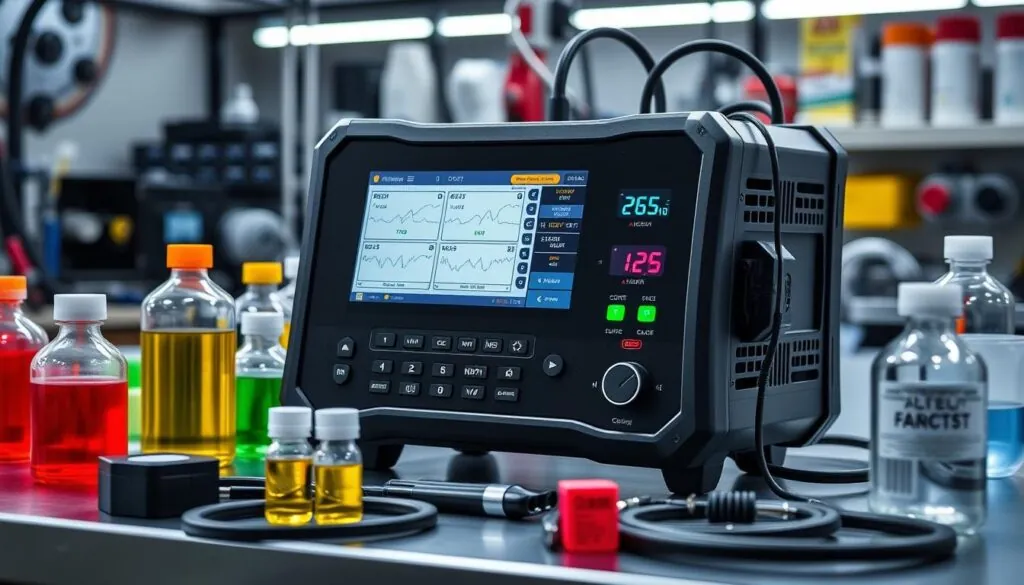And have you ever pondered how factories and plants prevent those pesky nitrogen oxides (NOx) from running amok? With 2025 regulations tightening, choosing the right emissions analyzer is not only about keeping in compliance — it’s about running smarter and greener. No matter if you’re operating a refinery, chemical or power plant, this article is going to take you through to everything you need to know to locate the NOx monitoring Technology solution for your operation.
Why it’s even more important to monitor NOx
Here’s a scenario for you: you’re supervising a high pressure unit and NOx readings continue to climb. Here’s where an emissions analyzer comes in — your on-the-job pollution detective. This equipment takes an accounting of combustion byproducts, such as nitrogen oxides, and can save you from fines, from protecting workers, and from the overall toll on the environment. And the analyzers of today are so much easier to use than the old clunky units from years gone by.
What to Consider Before You Buy
Accuracy & Precision
In gas analysis, precision is everything. The E.P.A. frequently requires a level of precision down to parts per billion. Tech like chemiluminescence detection (CLD) and tunable diode laser absorption spectroscopy (TDLAS) were there.
- CLD: Think of it as your firefly show — bright, precise, steady.
- TDLAS: More expensive, but great if your NOx levels are all over the place.
Measurement Range
Not an analyzer covers the entire spread 0. A few can take NOx from 0 to 5ppm while others can even reach up to 10,000ppm. Match your average emissions range with the analyzer’s spec, and you won’t get any unpleasant surprises.
| Gas | Industries |
|---|---|
| Oxygen (O₂) | Metalworking, Aerospace, Water Treatment |
| Carbon Monoxide (CO) | Fossil Fuel Plants, Steel Mills |
| Hydrogen (H₂) | Gasification, Metal Heat Treatment |
Portability
Take your analyzer into a dirty field or up a stack? Portables such as Testo’s flue gas analyzers are durable, compact and capable of running on battery power for as long as 20 hours. Perfect for on-the-go pros.
Ease of Use
Let’s face it — no one wants to own a device that seems like rocket science. For instance, the GT6000 Mobilis provides on-the-spot results on a screen which is bright and easy to use. Pair it with the user-friendly software, and analyses data on your desk — or even your couch.
Top Tech Trends Shaping 2025
Emissions monitoring is evolving fast. Here’s what’s hot:
- Predictive Emissions Monitoring Systems (PEMS): These employ intelligent algorithms to calculate NOx levels on a real-time basis – that can help reduce maintenance bills by at least 50% over 5 years.
- Wireless & Cloud Integration: Keep an eye on your emissions dashboard from anywhere, including your phone. Tweak settings on the go, whether you’re on site or 300 meters up the road.
See It in Action
Want a quick walkthrough? This video will help you understand how modern analyzers take on NOx with confidence:
And here’s a natty analyzer firing on all cylinders:
Cost vs. Value: Nailing Down Your Sweet Spot
Yes, you can get your hands on a basic analyzer for a few grand. But those high-end TDLAS models? They can hit five figures. And do consider maintenance: PEMS setups often save you money by sparing you the expense of fancy hardware swaps.
Pro tip: Sellers like Thermo Fisher have training programs that can be worth the investment. With a bit of up-front know-how, you can avoid headaches (and surprise expenses) down the line.
Your Next Steps
A sound NOx monitoring solution is all about fit. Are you looking for accuracy, range, portability, ease of use? With smart tech on your side, and compliance deadlines on the horizon, you’ll always be ahead of the game.
What feature is at the top of your must-have list? Let me know in the comments— I am curious to hear!
Frequently Asked Questions (FAQs)
How frequently do I need to calibrate my emissions analyser?
Most pros suggest every 6 to 12 months, depending on use. Newer models even notify you when calibration is due — convenient, right?
Is it possible to monitor more than one pollutant using a single analyzer?
You bet. Cross-parametric capabilities such as the Servomex SpectraExact 2500 measuring NOx, CO and much more simultaneously are excellent for multi-parametric systems.
How long does an analyzer typically last?
With sturdy care, you’re looking at 5–10 years. I’ve seen some Testo units soldier on since 2018 and still holding on.
Do portable systems give the same accuracy as fixed systems?
They’re getting there. Advancements in miniaturization have models like the MiniHD 5200 performing at close to fixed-level accuracy—so long as it’s dry!

